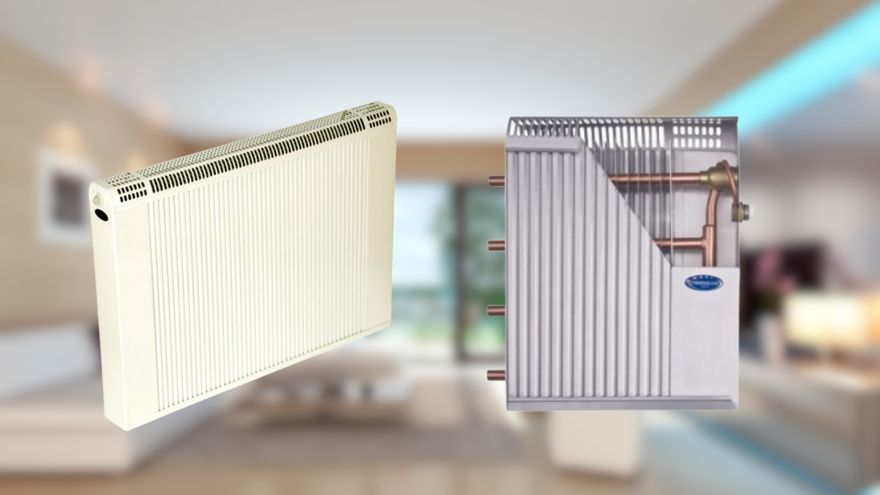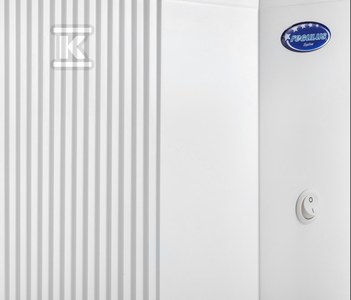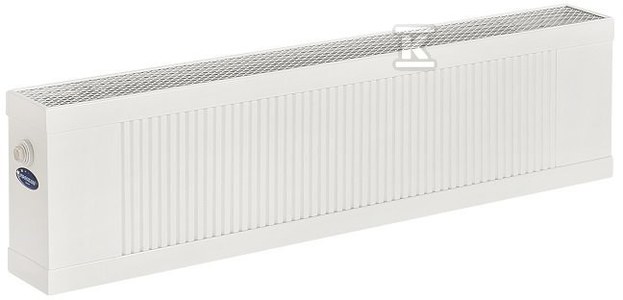Radiators are heat exchangers. The water-air type is very often used. They can be used in various rooms, even where there is increased humidity. Many people wonder whether traditional radiators can be economical. Today we will answer this question. We will also present radiators with low water capacity and low own weight, i.e. with low inertia, which is crucial for the ability to control the heating.

Check out copper-aluminum radiators at the Onninen wholesaler
Can traditional radiators be economical?
In their case, heat is emitted through convection, i.e. the movement of heated air that circulates in a given room, and through radiation, i.e. radiation from the heated surface. Radiators certainly give you a lot of freedom in terms of temperature regulation. All you need to do is unscrew or screw down the thermostat to gain thermal comfort. However, this applies to radiators with a specific design, where low inertia is crucial. Don't forget that radiators can be used in really large rooms.
Low inertia means radiators are easily controlled?
The heating system with a low total weight allows not only quick access to heat for the user, but also obtaining heat in exactly the desired amount. Such radiator heating can be easily started and stopped because the system's inertia is minimal. The low-mass system can be used practically all year round, as the costs of activating heating with low-temperature radiators for a dozen or several dozen minutes to correct the temperature are very low.
 The low thermal inertia of copper-aluminum radiators is, of course, very important for the ability to control the heating; it will work well in systems powered by a low-parameter factor in transitional periods when it is necessary to quickly raise or lower the radiator temperature. Another key feature for low-temperature heating is the largest possible effective heat transfer surface and heat emission through convection and/or fan-assisted circulation. We achieve thermal comfort thanks to heating with radiators with a large surface but at a lower temperature, and the high share of radiation from the large, corrugated surface of the radiator means that the heat is distributed very evenly in the room.
The low thermal inertia of copper-aluminum radiators is, of course, very important for the ability to control the heating; it will work well in systems powered by a low-parameter factor in transitional periods when it is necessary to quickly raise or lower the radiator temperature. Another key feature for low-temperature heating is the largest possible effective heat transfer surface and heat emission through convection and/or fan-assisted circulation. We achieve thermal comfort thanks to heating with radiators with a large surface but at a lower temperature, and the high share of radiation from the large, corrugated surface of the radiator means that the heat is distributed very evenly in the room.
This solution will allow for a maximum reduction in heating costs. This applies to both standard heating systems and modern ones that use a heat pump.
What are the advantages of low-temperature radiators?
Non-temperature radiators emitting heat through convection and radiation have many advantages, including:
· low mass, but large heat exchange surface;
· quick start of the heating function, using a small amount of starting energy;
· enable effective low-temperature heating;
· provide high thermal comfort;
· they allow you to save money because heat consumption is lower.
How to increase efficiency with fan radiators?
There are versions of low-temperature radiators with fan-assisted circulation (24 V or 230 V), which significantly improve their efficiency in systems with low-temperature, ecological heat sources. The fan increases the cooling of the heating medium in the radiator, which increases the amount of heat released by the radiator into the room - therefore, you can obtain more power without changing the size of the radiator.
Low-temperature radiators in the Onninen wholesaler
We present easily controllable Regulus radiators, which have been designed to achieve maximum efficiency, also at low supply temperatures.
 A good choice may be the Regulus S2/160 Sollarius copper-aluminum radiator model. It impresses with its slim form. It is made of parallel copper pipes containing installation water and aluminum fins that create a wavy heating surface, thanks to which the heat is distributed very evenly in the room. It is highly resistant to corrosion.
A good choice may be the Regulus S2/160 Sollarius copper-aluminum radiator model. It impresses with its slim form. It is made of parallel copper pipes containing installation water and aluminum fins that create a wavy heating surface, thanks to which the heat is distributed very evenly in the room. It is highly resistant to corrosion.
It reaches full rated power very quickly. The Regulus SOLLARIUS REVERS SD 6/R/180 copper-aluminum radiator will also work well in low-temperature installations - the lower one is adapted for mounting a 24 V fan - ideal for installations with a heat pump. Thanks to the fan, the device heats with variable power, adapting to the user's needs. It impresses with its modern aesthetics and ensures good thermal efficiency.
If you are looking for a universal radiator that will work well in an installation equipped with a standard central heating boiler operating at higher parameters as well as in low-temperature installations, the Regulus SOLLARIUS E-VENT S3/E/60 copper-aluminum radiator will certainly be suitable. Its total weight is really low and at the same time it has low thermal inertia. Thanks to the easy assembly and disassembly of the fan, it works perfectly in an installation equipped with a standard central heating boiler operating at higher parameters, which in the future will be replaced with an ecological low-temperature heat source. In the first stage, the radiator will operate without a fan, and then, after changing the heat source to a low-temperature one, with a fan.
Regardless of the type of installation, it ensures effective heating - the room is heated in a mixed manner by intense wide-angle thermal radiation from the corrugated surface and by natural or fan-assisted convection.
Check out copper-aluminum radiators at the Onninen wholesaler
